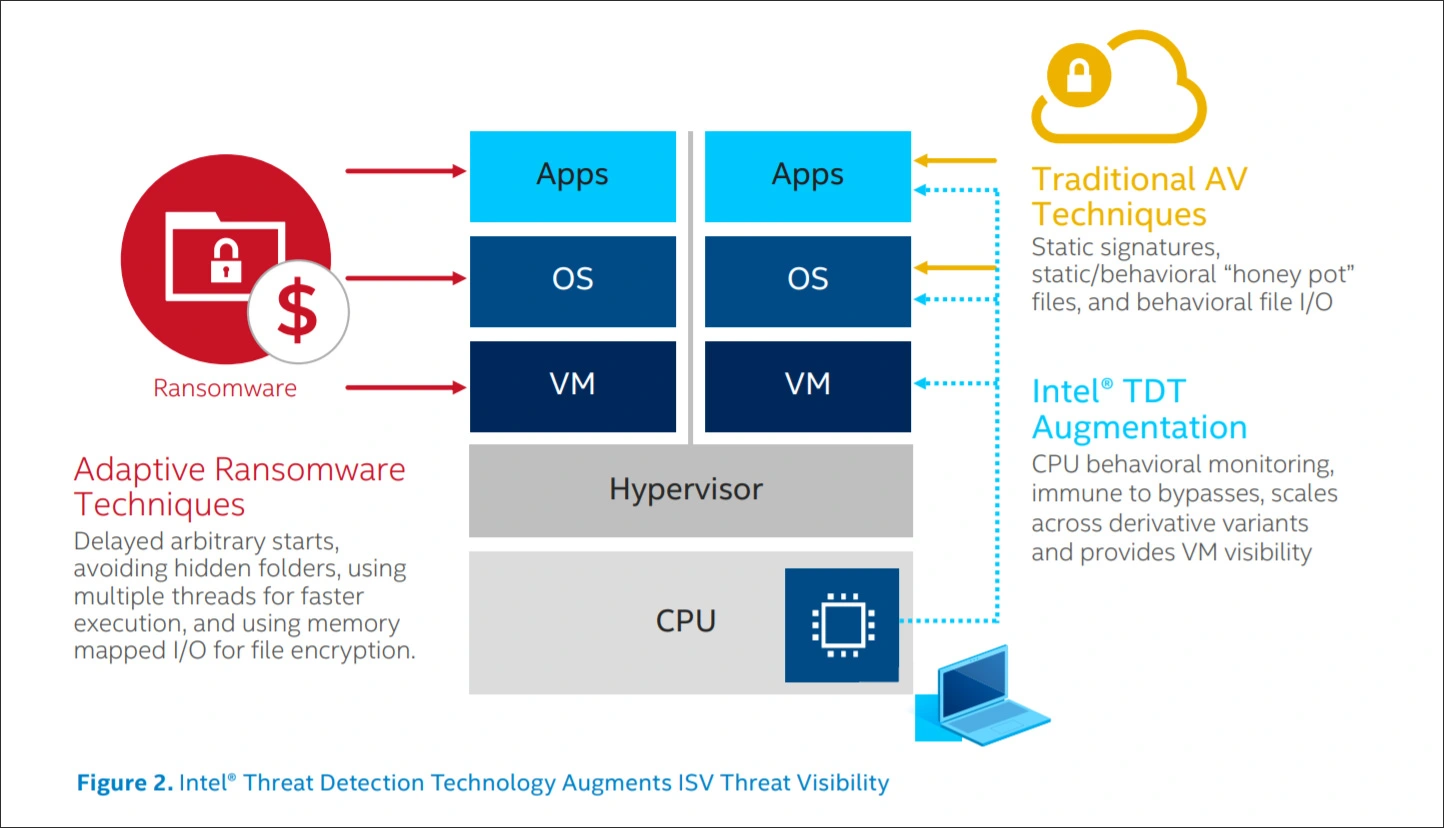KEEP IN TOUCH
Subscribe to our mailing list to get free tips on Data Protection and Cybersecurity updates weekly!







Intel announced today at CES 2021 that they have added hardware-based ransomware detection to their newly announced 11th generation Core vPro business-class processors.
These hardware-based detections are accomplished using Intel Threat Detection Technology (Intel TDT) and Hardware Shield that run directly on the CPU underneath the operating system and firmware layers.
Intel Hardware Shield is a built-in security feature that out-of-the-box security protections directly to the CPU hardware, such as:
Intel TDT uses hardware telemetry to detect fileless malware, cryptomining, polymorphic malware, and ransomware in real-time based on CPU metrics and behavioral detections. When a threat is discovered, TDT will send signals to security software integrated with the platform to alert it of the threat.
Also Read: Key PDPA Amendments 2019/2020 You Should Know
“As threats are detected in real-time, Intel TDT sends a high-fidelity signal that can trigger remediation workflows in the security vendor’s code. Intel TDT issues no specialized efficacy or performance reports; rather, the data is seamlessly incorporated as a part of normal endpoint sensor reporting,” Intel’s TDT product brief explains.

Intel TDT also allows security software to offload memory scans to the onboard Intel graphics engine for better performance.
As these features run directly on the CPU and run below any software, including the BIOS and firmware, it prevents malware from hiding from the hardware security features.
As part of today’s announcement, security firm Cybereason announced that they would be integrating their security platform with Intel’s TDT to perform hardware-based ransomware detection.
“This collaboration with Intel to add CPU based threat detection bolsters our long history and industry-leading capabilities in detecting and eradicating ransomware. The combination of best-of-class hardware, software, and security know-how provides defenders with full-stack visibility critical to ending the era of double extortion that is currently costing organizations hundreds of millions each year,” said Lior Div, CEO and Co-Founder, Cybereason.
Using the CPU counters and metrics exposed by TDT, Cyberreason states that they will benefit from the following:
According to Cybereason and Intel, this partnership will be the first instance of PC hardware being directly used to detect ransomware.
Also Read: The 5 Benefits Of Outsourcing Data Protection Officer Service
“Ransomware was a top security threat in 2020, software alone is not enough to protect against ongoing threats. Our new 11th Gen Core vPro mobile platform provides the industry’s first silicon enabled threat detection capability, delivering the much needed hardware based protection against these types of attacks. Together with Cybereason’s multi-layered protection, businesses will have full-stack visibility from CPU telemetry to help prevent ransomware from evading traditional signature-based defenses,” said Stephanie Hallford, Client Computing Group Vice President and General Manager of Business Client Platforms at Intel.